the story
No-one knew quite what the Mayor of Shrewsbury had done to the giant, but it had certainly made him angry.
This particular giant wasn’t known for his good temper. When he got annoyed everybody with a shred of sense would hide away and let him cool down.
This time he was so mad that his Welsh neighbours thought he might never be calm again. They were very relieved when he stomped off across the border heading for Shrewsbury with his gigantic, gold spade full of good, Welsh earth.
What was the giant going to do?
Well, he aimed to dump his load of mud into the River Severn, damming it up, flooding Shrewsbury, and drowning all the townsfolk.
I don’t know if you’ve heard of people who get so annoyed that they can’t see straight? Well luckily enough this giant was one of those. He walked straight past Shrewsbury and didn’t realise he was lost until he got to Wellington.
By this time he was tired too. He put down his spade of earth and scraped the mud off his boots. Then he started to look around for someone to guide him on his way.
A wise cobbler was on his way home to Wellington, with a bag full of holed shoes to mend, when he met the giant.
The giant told the cobbler of his quest and asked directions to Shrewsbury.
Now the cobbler may not have liked the people of Shrewsbury with their proud and haughty ways, but he valued their money. So he took a boot from his bag and showed the giant the hole in its sole.
“I’ve worn out all these shoes walking back from Shrewsbury”, he said.
The giant breathed a deep, defeated sigh, turned on his heels, and set off home for Wales.
What did he leave behind him?
A spadeful of earth – The Wrekin. And his boot scrapings – Ercall Hill.
en français
Le Géant & Le Cordonnier
Personne ne savait vraiment ce que le maire de Shrewsbury avait fait au géant, mais cela l’avait assurément mis en colère.
Ce géant-là n’était pas réputé avoir bon caractère. Lorsqu’il était contrarié, toute personne dotée d’une once de bon sens allait se cacher en attendant qu’il se calme.
Cette fois-ci, il était tellement furieux que ses voisins gallois pensaient qu’il ne se calmerait plus jamais. Ils furent soulagés lorsqu’ils entendirent ses pas lourds traverser la frontière en direction de Shrewsbury, avec son énorme pelle en or, remplie de bonne terre galloise.
Qu’allait faire le géant ?
Eh bien, il entendait déverser son chargement de boue dans la rivière Severn pour en faire un barrage, afin d’inonder Shrewsbury et de noyer tous ses habitants.
J’ignore si vous avez déjà entendu parler de gens qui entrent dans une si grande colère qu’ils ne peuvent plus voir clairement. Eh bien, par chance, ce géant était dans ce cas. Il dépassa tout bonnement Shrewsbury et ne réalisa pas qu’il s’était perdu avant d’arriver à Wellington.
A ce moment-là, il était également fatigué. Il déposa sa pelletée de terre et racla la boue de ses bottes. Ensuite, il commença à se mettre en quête de quelqu’un qui pourrait lui indiquer le chemin.
Un sage cordonnier rentrait chez lui, à Wellington, avec un sac rempli de chaussures trouées à réparer, lorsqu’il rencontra le géant.
Le géant interrogea le cordonnier et lui demanda la direction de Shrewsbury.
Si le cordonnier n’aimait pas bien les gens de Shrewsbury à cause de leur orgueil et de leurs manières arrogantes, il appréciait leur argent. Alors, il sortit une botte de son sac et montra au géant le trou dans la semelle.
‘J’ai usé toutes ces chaussures en revenant à pied de Shrewsbury’, dit-il.
Le géant poussa un profond soupir de découragement, tourna les talons et se mit en route pour rentrer chez lui, au Pays de Galles.
Que laissait-il derrière lui ?
Une pelletée de terre : Le mont Wrekin. Et la boue de ses bottes : L’Ercall Hill (Hill désigne une colline ndt)
Translation: Euro Langues Assistance & Tradufrance funded by…

Background Facts

The Wrekin is a very distinctive 400m hill which dominates the views of mid Shropshire near the new town of Telford. So strong is its presence that it has entered the language of the Midlands people. “All round the Wrekin” means ‘going the long way’ or ‘not explaining something clearly and directly’, (“He went all round the Wrekin”).
The Wrekin in history
From the Bronze Age to the 1st Century the Wrekin was the hill fort headquarters of the Celtic Cornovii tribe. The last ruler of the hill fort was Virico when the conquering Roman army arrived. The Romans built their fort 4 miles to the west but called it Viroconium in honour of their defeated foe.
Although no longer a fort the Wrekin became part of a Royal Forest during Saxon and Norman times. The Normans tried to rename the hill Mount Gilbert (after a local hermit), but the name refused to stick and the people all around insisted on still calling it the Wrekin.
Wrekin Stories
There are a good many stories about the Wrekin involving giants and devils. There is even a tale of a mermaid in one of the pools. The story of the Giant and the Cobbler is told substituting the devil for the giant but the giant version is the older legend.

Another ancient fable tells of two exiled giants trying to build a new home. They pilled up soil to make a massive hill leaving a great, long trench, which filled with water and formed the River Severn.

When the hill was finished they argued over who should live there. One giant raised his spade to hit his brother, but up flew a raven and pecked his eyes so he missed.

The spade came down hard and left a cleft in the rock (this feature is now called the Needle’s Eye).

The raven’s attack had caused the giant to shed a massive tear which burned into the hill forming a pool (nowadays this pool is known as the Raven’s Bowl or the Cuckoo’s Cup – no matter how hot the summer, it never dries up).

The other giant knocked his brother over and piled earth on top of him to imprison him under another hill (the Ercall), at dead of night you can still hear the trapped giant moaning, or so local people say!

The Wrekin’s Geology
The Wrekin is made of volcanic rock but is not a volcano. No-one knows exactly where the vent was that deposited the molten rock and ash that made up the Wrekin many millions of years ago.
It is, however, very close to the Church Stretton Fault, a dormant fault in the earth’s crust. When this fault was active there would have been many volcanic eruptions and earthquakes in the area. The fault reminds us of its presence occasionally. At 14.50 on 2nd April 1990 there was a small earthquake in Shropshire due to a slight movement in this fault. Only minor damage was caused but a stone did fall and lodge itself in the Needle’s Eye.
Ercall Hill (also known as The Ercall)
Ercall Hill is a smaller, wooded hill next to the Wrekin with pleasant way-marked paths. It bears the scars of much quarrying so if you go walking there don’t stray from the paths.
The River Severn
In the picture it looks like the Severn runs by the foot of the hill, but actually it is about two miles away at its nearest point.
en français
Le mont Wrekin

Le Wrekin est une très remarquable colline haute de 400m qui domine le paysage du centre du Shropshire, près de la ville nouvelle de Telford. Sa présence est si forte qu’elle est entrée dans le jargon des gens des Midlands. ‘Autour du Wrekin’ signifie ‘prendre le chemin le plus long’ ou ‘tourner autour du pot, ne pas s’exprimer clairement ni directement’, (‘Il a tourné autour du Wrekin’).
Le mont Wrekin dans l’histoire
De l’Age de Bronze au 1er Siècle, le Wrekin servait de poste de commandement à la tribu Celtique des Cornovii. Le dernier chef de cette colline fortifiée était Virico, au moment de l’arrivée de l’armée conquérante des Romains. Les Romains construisirent leur forteresse 6 kilomètres à l’ouest mais l’appelèrent Viroconium en hommage à leur ennemi vaincu.
Bien qu’il n’était alors plus une forteresse, le Wrekin entra dans le domaine de la Forêt Royale à l’époque des Saxons et des Normands. Les Normands tentèrent de rebaptiser la colline Mont Gilbert (en référence à un ermite local), mais ce nom ne perdura pas et tous les gens des environs revendiquèrent de continuer à l’appeler le Wrekin.
Les légendes du mont Wrekin
De nombreuses légendes à propos du Wrekin impliquent des géants et des démons. Il existe même un conte sur une sirène dans l’un des lacs. L’histoire du Géant et du Cordonnier est contée en remplaçant le géant par le démon mais la version avec le géant est la plus ancienne légende.

Une autre vieille fable raconte la tentative de deux géants exilés de construire une nouvelle demeure. Ils amassèrent de la terre pour construire une colline massive, créant un grand et long fossé qui se remplit d’eau et forma la rivière Severn.

Lorsque la colline fut terminée, ils se disputèrent pour savoir lequel y vivrait. L’un des géants leva sa pelle pour frapper son frère mais un corbeau le survola et lui donna un coup de bec dans les yeux, alors il manqua son but.

La pelle s’abattit lourdement et laissa une fissure dans le roc (cette particularité est aujourd’hui appelée Needle’s Eye (le Chas de l’Aiguille).

L’attaque du corbeau avait fait verser par le géant une énorme larme qui avait rongé la colline, créant ainsi un lac (aujourd’hui, ce lac est connu sous le nom de Raven’s Bowl (le Bol du Corbeau) ou Cuckoo’s Cup (la Tasse du Coucou) – aussi chaud que puisse être l’été, il ne se tarit jamais).

L’autre géant renversa son frère et tassa de la terre sur lui pour l’emprisonner sous une autre colline (l’Ercall). Au plus profond de la nuit, on peut encore entendre gémir le géant emprisonné – du moins, c’est ce que disent les gens de là-bas!

La géologie du mont Wrekin
Le Wrekin est constitué de roche volcanique mais il n’est pas un volcan. Personne ne sait exactement où se trouvait la cheminée qui déposa la roche fondue et la cendre qui formèrent le Wrekin il y a des millions et des millions d’années.
Toutefois, elle est très près de la Faille de Church Sretton, une faille sommeillant dans la croûte terrestre. Lorsque cette faille était active, il y avait beaucoup d’éruptions volcaniques et de tremblements de terre dans la région. La faille nous rappelle sa présence de temps en temps. A 14h50, le 2 avril 1990, il y a eu un petit tremblement de terre à Shropshire, causé par un léger mouvement à l’intérieur de cette faille. Il n’a pas provoqué de dommages importants mais une pierre est effectivement tombée pour aller se loger dans le Chas de l’Aiguille.
La colline Ercall (également appelée l’Ercall)
La colline Ercall est une colline plus petite et boisée près du Wrekin. Elle offre d’agréables chemins balisés. Elle porte les cicatrices d’une importante exploitation de carrières, alors, si vous allez vous promener par-là, ne vous écartez pas des chemins.
La Rivière Severn
Sur l’image, la Severn semble couler au pied de la colline mais, en réalité, elle se trouve à près de 3 kilomètres au point le plus proche.
Translation: Euro Langues Assistance & Tradufrance funded by…

Key Stage 2 Activities
But That’s Only A Jam Tart!
The Wrekin looks quite a lot like a volcano and it is made of volcanic rock, but it isn’t a volcano. Nobody knows exactly where the volcano vent was that deposited all the ash and rock which made the Wrekin.
You can see how a volcanic eruption happens just by baking jam tarts.
Put pastry circles in a tart tray and put a spoonful of jam into each. Then cover each one with another pastry circle as a lid. Press the lids well around the edges to seal them and make a little hole in the top of each one (this represents a fault in the earth’s crust).
Pop the tarts into the oven, and wait while they cook. When they come out the jam will have ‘erupted’ out of the vent. As the jam and air inside the pastry cases got hotter and hotter the pressure built up because both jam and air expand when they get hotter. When the pressure inside the case got too high it found the weakest spot (the vent) as an escape route. The jam erupted just like a volcano – Now let them cool down a bit and it’s “happy eating”, I bet you didn’t know science could be so tasty.
What Would You Look Like?
Giants are so tall that we must look very funny to them when they look down on us.
Get a model (maybe a Lego person) and look down on it as if you were a giant. Now can you draw what you would look like to the giant.
Take Him Home
The Giant is at Wellington, having created the Wrekin. Find a map of the area, which route would you chose to send him home to Wales. Don’t forget, keep him away from Shrewsbury – we don’t want any more trouble.
So Misleading
Can you think up an alternative story to make the giant calm down and go home?
That Explains It All
There are many stories that tell about how hills, mountains, lakes and other features came to be where they are now. The Giant and the Cobbler is just one of many stories of the origin of the Wrekin. Tales like this come from all around the world. Prince Edward Island, in Canada, is said to be a pillow for a sleepy giant, Glooskap.
Can you come up with a myth to explain a hill, stream or lake near you?
The Devil and the Farmer’s Wife
Most of the stories told about giants and the Wrekin are also told with the Devil as the major character. Here’s a song about The Devil and the Farmer’s Wife for you to try to sing.
See Lyric…
There was an old farmer and he lived on a hill;
He ain’t moved away, he’s a-living there still.
Sing hi diddle I, diddle I fye, diddle I, diddle I day.
The devil he came to the farmer one day;
Says “One of your family I’m taking away”
Sing hi diddle I, diddle I fye, diddle I, diddle I day.
“Oh, please don’t take my eldest son;
There’s work on the farm that’s got to be done.”
Sing hi diddle I, diddle I fye, diddle I, diddle I day.
“Take my wife, with the joy of my heart;
And I hope, by golly, that you never part.”
Sing hi diddle I, diddle I fye, diddle I, diddle I day.
The devil put the old woman into a sack
And down the road went clickety-clack.
Sing hi diddle I, diddle I fye, diddle I, diddle I day.
And when they got to the fork of the road
He says, “Old woman, you’re a hell of a load”.
Sing hi diddle I, diddle I fye, diddle I, diddle I day.
And when they got to the gates of Hell
He says, “Stoke the fire, boys, we’ll roast her well”
Sing hi diddle I, diddle I fye, diddle I, diddle I day.
Then up stepped a devil with a ball and chain
She upped with her foot and kicked out his brain
Sing hi diddle I, diddle I fye, diddle I, diddle I day.
Then nine little devils went running up the wall
Crying “Take her back, Daddy, she’ll murder us all”.
Sing hi diddle I, diddle I fye, diddle I, diddle I day.
Well, the old man was peeking through a crack;
When he seen the old devil come a-bringing her back.
Sing hi diddle I, diddle I fye, diddle I, diddle I day.
“Here’s your wife, both sound and well;
If she’d stayed any longer, she’d a-torn up Hell.”
Sing hi diddle I, diddle I fye, diddle I, diddle I day.
“I’ve been a devil most all of my life;
But I never knew what Hell was ’till I met with your wife”
Sing hi diddle I, diddle I fye, diddle I, diddle I day.
This proves that the women are better than the men;
They can all go to Hell and come back again.
Sing hi diddle I, diddle I fye, diddle I, diddle I day.
Thanks to our page sponsors…





